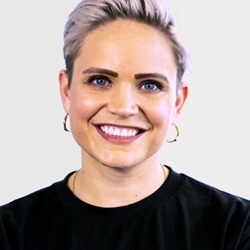We're all familiar with the way influencing plays out in sponsored posts on YouTube and Instagram and various other social platforms, but it can also be a valuable strategy in the B2B world.
Here's how to get it right for your company.
Understanding the Meaning of Influence
The first step in building a successful B2B influencer strategy is defining what an influencer really is. For some, that will mean rethinking how they approach influencing.
It's all about passion: Passion creates energy, and people buy into energy. So you need to find and work with people who are already passionate about what your business does: They are your true influencers.
The aim should be a long-term collaborative partnership rather than a one-time financial exchange in which you pay the influencer for their endorsement. So that you both get value from the collaboration, find people who want to work with you just as much as you want to work with them.
With that in mind, instead of seeking out macro influencers or people with the largest followings, find advocates who would naturally buy your product or take part in the experience you offer. Finding the right people is key to building trust and authority in the B2B space, whether by working with your clients on case studies and testimonials or joining forces with leading individuals in your industry.
The trust element is critical to influencer success. It doesn't matter whether you're selling technology solutions or training; people will trust someone else's endorsement if the person it's coming from is relevant to the industry and that person is speaking from their own experience.
In short, influencing needs to be organic and real: Working with an influencer who's too far removed from what you do, or giving your influencer pre-written posts to share, is going to cost you the important "human" element.
And trust works both ways. As a B2B brand, use your tone of voice, heritage, and identity to build up trust in who you are and what you do. Making it clear what your values are and where you stand is vital if you want to create meaningful, lasting influencer partnerships.
Finding Your Community
Community is at the heart of influencing, particularly for B2B brands. It's important to cultivate a community that will speak passionately about what you sell.
So, how do you find those people? Traditional influencer discovery tools are less useful here, so start with Facebook and LinkedIn groups. I'm part of a few social media and digital marketing groups where there's a real sense of community because everyone's there for the same reason—to better themselves and their skills. We influence each other in the most natural, organic way. Also, think about starting conversations or partnering with the people who own the groups or forums themselves.
The benefits of engaging with online groups go beyond finding influencers. As well as providing a natural introduction into conversation, posting questions in groups can give you invaluable insights. For example, I was recently preparing training for a university, and I asked a group what advice they had for graduates hoping to work in digital marketing. I got 40 or 50 replies. That's the kind of power that comes from tapping into networks and communities.
Can't find a relevant group? Start one yourself. It's a great way to facilitate conversation and find out more about what your customers and audience want.
Harnessing the Passion Within Your Organization
Employees are often an untapped resource when implementing B2B influencer strategies. You'll want to find the people within your organization who are really passionate about the space you work in and what you offer, because they'll naturally want to PR themselves.
By talking about what's going on in the industry—in their own words, on their own platforms—employees gain attention that can evolve into new business opportunities. I call the content they produce employee opinion pieces.
Another benefit of such an approach is that it naturally brings a human element to your business. As a company, you often stick to set guidelines about what you can say and how. But when your employees are speaking for themselves, they bring feelings and opinions that make what they're saying more relatable, without restrictions.
So, what can you do as an organization to help encourage that? Well, if you're to be successful, the desire to influence needs to be authentic and it needs to come from the employee first. Whatever business you're in, there will be people in your organization who are passionate about your company and who'll get a buzz from talking about it on their platforms. Though you don't want to force anything, you can create a culture where people will naturally feel more open to talking about your brand and the great things you do.
That's why your recruitment strategy is so important. Hiring people with passion—even if they don't yet have the skills you want in the long-term—can be a better option than hiring someone who has more experience but who's less likely to advocate for your brand.
Hiring aside, you can also help in practical ways. For example, if employees want to create some content but lack copywriting skills, you can offer support by putting them in touch with someone within the organization who will ghostwrite for them.
Learning From B2C Brands
My final piece of advice: as much as B2B strategies differ from B2C ones, you still learn plenty from the latter. For example, B2C brands tend to be better at engaging with their audience on a lifestyle level. But in B2B organizations, the instinct is to retain a corporate voice. Remember, though, that you're still speaking to humans—even if it's in a business capacity. So be bold and break out of the commercial mindset if you want to see your influencer strategy succeed.




